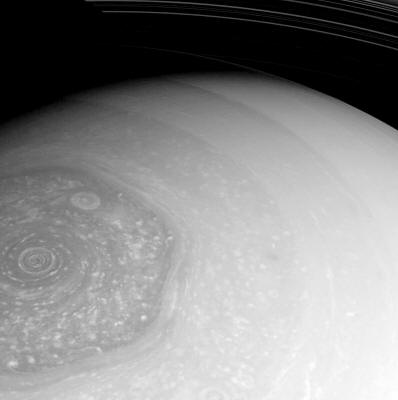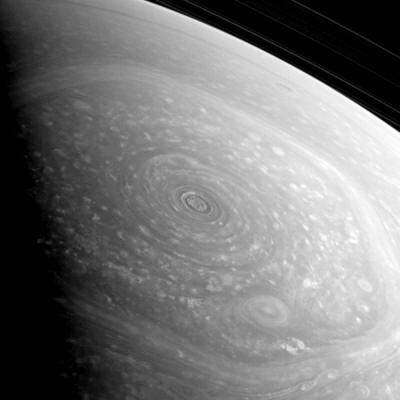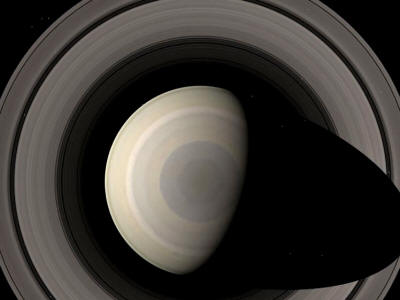|
February 28, 2013
captured on 26 Feb. 2013
(NASA/JPL/SSI)
Freshly delivered from Cassiniís wide-angle camera, this raw image gives us another look at Saturnís north pole and the curious hexagon-shaped jet stream that encircles it, as well as the spiraling vortex of clouds at its center.
Back in November we got our first good look at Saturnís north pole in years, now that Cassiniís orbit is once again taking it high over the ringplane.
With spring progressing on Saturnís northern hemisphere the upper latitudes are getting more and more sunlight - which stirs up storm activity in its atmosphere.
The bright tops of upper-level storm clouds speckle Saturnís skies, and a large circular cyclone can be seen near the north pole, within the darker region contained by the hexagonal jet stream.
This could be a long-lived storm, as it also seems to be in the images captured on November 27, 2012 (below image).
Image W00077190
About 25,000 km (15,500 miles) across, Saturnís hexagon is wide enough to fit nearly four Earths inside!
The Saturn hexagon as seen by Voyager 1 in 1980 (NASA)
The hexagon was originally discovered in images taken by the Voyager spacecraft in the early 1980s. It encircles Saturn at about 77 degrees north latitude and is estimated to whip around the planet at speeds of 354 km/h (220 mph.)
Watch a video of the hexagon in motion here.
The rings can be seen in the background fading into the shadow cast by the planet itself. A slight bit of ringshine brightens Saturnís nighttime limb.
Cassini was approximately 579,653 kilometers (360,180 miles) from Saturn when the raw image above (W00079643) was taken.
|



